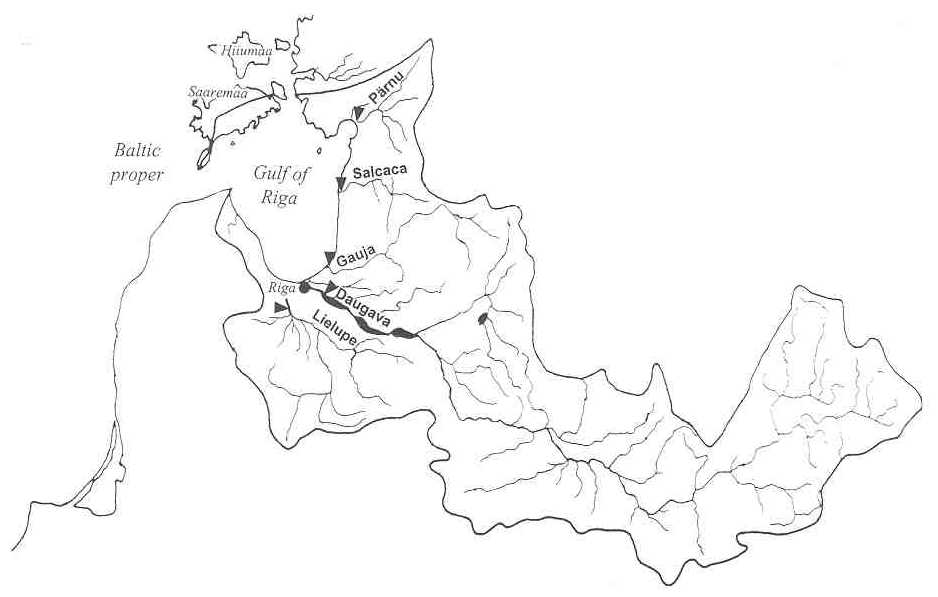


 |  |  | 19.2 High input, low load |
The Gulf of Riga receives more than 140,000 t of nitrogen and 3,000 t of phosphorus annually [282]. Most of this pollution load can be attributed to the activities in the drainage basin of the Gulf of Riga. The two largest drainage basins are those of the Daugava and Lielupe River, which cover 78% of the total drainage area (Figure 5). On an annual basis, runoff corresponds to 9% of the total water volume of the Gulf. Thus, the impact of the rivers on the Gulf of Riga is substantial. River supply to the Gulf of Riga is by far the most important pathway of nutrients. Approximately 113,000 t of nitrogen (79% of the total load) and 2,050 t of phosphorus (68% of the total load) are annually transported by the rivers to the Gulf. In addition, the Gulf receives approximately 65,000 t yr-1 of silica. Bio-available forms of nitrogen and phosphorus were shown to be responsible for 55% and 74% of the total loads of nitrogen and phosphorus, respectively. The share for the inorganic nitrogen is comparable with other Baltic Sea rivers, whereas the share for phosphate is somewhat higher (P. Stålnacke, pers. comm.). The high N:P ratio (>50 on an average annual basis, w:w) suggests that rivers entering the Gulf of Riga are phosphorus-limited, and that their discharge contributes to phosphorus limitation in the Gulf, which was suggested by Yurkovskis et al. [505].

Although the riverine input of nutrients is high, the area-specific load from the catchment area of the Gulf of Riga is low or moderate compared to loads from other areas in the Baltic Sea region. For example, Stålnacke [438] reported annual area-specific riverine exports of 12.2 kg ha-1 for nitrogen and 0.42 kg ha-1 for phosphorus in the Western Baltic sub-basin (i.e. Kattegat, The Belts, Øresund) compared to 8.3 kg ha-1 for nitrogen and 0.15 kg ha-1 for P reported for the Gulf of Riga catchment area by Laznik et al. [282]. These relatively low values are unexpected in view of the generally inefficient sewage treatment for the 4.5 million inhabitants in the drainage basin and the previously intensive agriculture (approximately 40% of the catchment area is used for agricultural production) with e.g. inefficient and inappropriate handling and spreading of manure and commercial fertilisers.
 |  |  | 19.2 High input, low load |